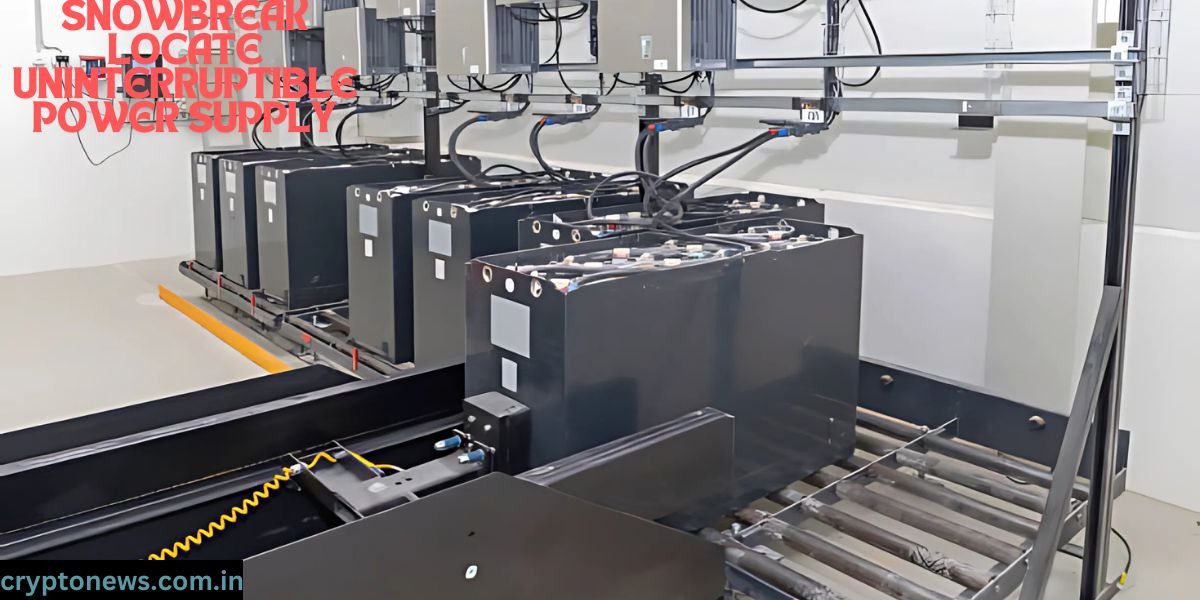In today’s digital age, the reliability and continuity of systems are paramount. Whether it’s for business-critical infrastructure or gaming applications, having a reliable power backup is essential. One of the key components in ensuring seamless operations, especially in systems like Snowbreak, is the snowbreak locate uninterruptible power supply (UPS). In this article, we’ll explore the role of UPS systems in Snowbreak technology, how they work, and why they are indispensable for maintaining system integrity.
What is an Uninterruptible Power Supply (UPS)?
An Uninterruptible Power Supply (UPS) is an electrical device that provides emergency power to a load when the main power source fails. It offers temporary power using batteries or flywheels until the main power is restored or a backup generator kicks in. The main advantage of a UPS is its ability to prevent system shutdowns, data loss, and hardware damage during power interruptions.
In snowbreak locate uninterruptible power supply systems, the UPS ensures that critical components—such as servers, networking devices, and gaming infrastructures—remain operational during outages, which can be crucial for maintaining real-time communication and data processing.
Why is a UPS Crucial for Snowbreak Locating Systems?
1. Maintaining System Stability During Power Failures
In systems like snowbreak locate uninterruptible power supply continuous power is vital to ensure that all components, from user interfaces to backend servers, function without interruption. A UPS provides a buffer in times of power loss, preventing immediate system failure. This is particularly crucial when the system is handling large-scale real-time data processing, where even a few seconds of downtime can result in data loss or corruption.
2. Protecting Sensitive Equipment
Power surges, drops, and outages can be detrimental to sensitive electronics. Without a UPS, devices within Snowbreak’s locating infrastructure are at risk of hardware damage due to power inconsistencies. A UPS acts as a safeguard, absorbing power fluctuations and providing stable, clean power, thus extending the lifespan of critical equipment.
3. Preventing Data Loss and Corruption
In any system that processes large amounts of real-time data, such as snowbreak locate uninterruptible power supply, data integrity is non-negotiable. A power interruption during data transmission or processing can lead to corruption, resulting in significant downtime for recovery. UPS systems allow enough time to backup data and perform an ordered shutdown, thus avoiding catastrophic data loss.
4. Ensuring Continuous Communication
For Snowbreak to function properly, uninterrupted communication between servers, networks, and user terminals is essential. A UPS ensures that these systems continue to operate without interruptions, preventing communication breakdowns and ensuring that real-time locational data is always accessible.
How Does a UPS Work in Snowbreak Systems?
A UPS operates on the principle of storing electrical energy in a battery or similar storage device. When the main power supply fails, the UPS quickly switches to battery power. The system typically operates in two modes:
1. Standby Mode
In this mode, the UPS is in standby mode when the main power supply is stable. It only activates when there is a disruption in power, offering power backup for a short period.
2. Line-Interactive Mode
This mode provides a higher level of protection by regulating voltage fluctuations. It also offers a longer battery backup time compared to standby mode, which is ideal for high-demand systems like Snowbreak.
In Snowbreak locating systems, where there is a high reliance on both data integrity and system uptime, the Line-Interactive UPS is often preferred due to its ability to handle voltage regulation effectively, ensuring continuous system operation.
Key Features to Look for in a UPS for Snowbreak Systems
When choosing a UPS for snowbreak locate uninterruptible power supply, several key features should be prioritized to ensure optimal performance:
1. Battery Life and Capacity
The capacity and battery life of a UPS are crucial in determining how long the system can run on backup power. A larger capacity is needed to support Snowbreak’s critical systems during extended power outages. It’s vital to choose a UPS with a battery life that aligns with the average duration of power interruptions in your area.
2. Power Rating (VA)
The power rating, measured in volt-amps (VA), indicates the amount of power the UPS can handle. For Snowbreak systems, a high VA rating is necessary to ensure that all connected devices, from servers to network equipment, receive adequate power during outages.
3. Surge Protection
Surge protection is another critical feature, as Snowbreak locating systems are vulnerable to power surges that can occur from lightning or grid issues. A good UPS will offer built-in surge protection to safeguard against sudden spikes in power.
4. Battery Replacement and Maintenance
The longevity of the battery plays an important role in the reliability of the UPS. Hot-swappable batteries allow for easy replacement without shutting down the system, which is crucial for Snowbreak’s continuous operations.
5. Remote Monitoring and Alerts
To maintain the UPS in optimal condition, it is important to have the ability to monitor the system remotely. Many modern UPS systems come with remote monitoring capabilities, allowing administrators to track battery health, power load, and receive alerts when service is required.
Selecting the Best UPS for Your Snowbreak System
When selecting a UPS for Snowbreak’s locating systems, several factors should be considered to ensure the best match:
1. Determine Your Power Requirements
The first step is to calculate the total power required by your system. This includes all critical equipment that needs to stay operational in the event of a power failure, such as computers, network devices, and communication tools. Based on this calculation, choose a UPS with a power rating (VA) that meets or exceeds the required load.
2. Assess the Battery Run Time
Consider how long you need your Snowbreak system to run on backup power. If your UPS system will only need to sustain operations for a short period, a system with a shorter runtime may suffice. However, if extended power outages are common, opt for a UPS with a longer battery runtime.
3. Evaluate Brand Reputation and Reliability
Brands with a proven track record of reliability and high-quality UPS systems should be prioritized. Look for well-established manufacturers known for their UPS technology, such as APC by Schneider Electric, CyberPower, and Eaton.
4. Consider Additional Features
Additional features such as LCD displays, integrated software, and advanced surge protection can enhance the functionality of your UPS. These features provide better insights into the health of the system and improve overall system resilience.
Maintaining and Testing Your UPS System
Routine maintenance and testing are essential to ensuring that your UPS system remains in top condition. Regularly check the battery’s health, perform load tests, and clean the system to avoid dust buildup. It’s also important to update software and firmware to ensure the system works seamlessly.
Conclusion: The Crucial Role of UPS in Snowbreak Locating Systems
In summary, an Uninterruptible Power Supply (UPS) is an indispensable part of ensuring snowbreak locate uninterruptible power supply operate without interruption. By providing a reliable backup power source, protecting sensitive equipment, preventing data loss, and ensuring continuous communication, a UPS safeguards the integrity of the entire infrastructure. With the right UPS system, you can ensure that your Snowbreak locating system remains operational, even in the event of power disruptions, allowing for a seamless experience for all users.






